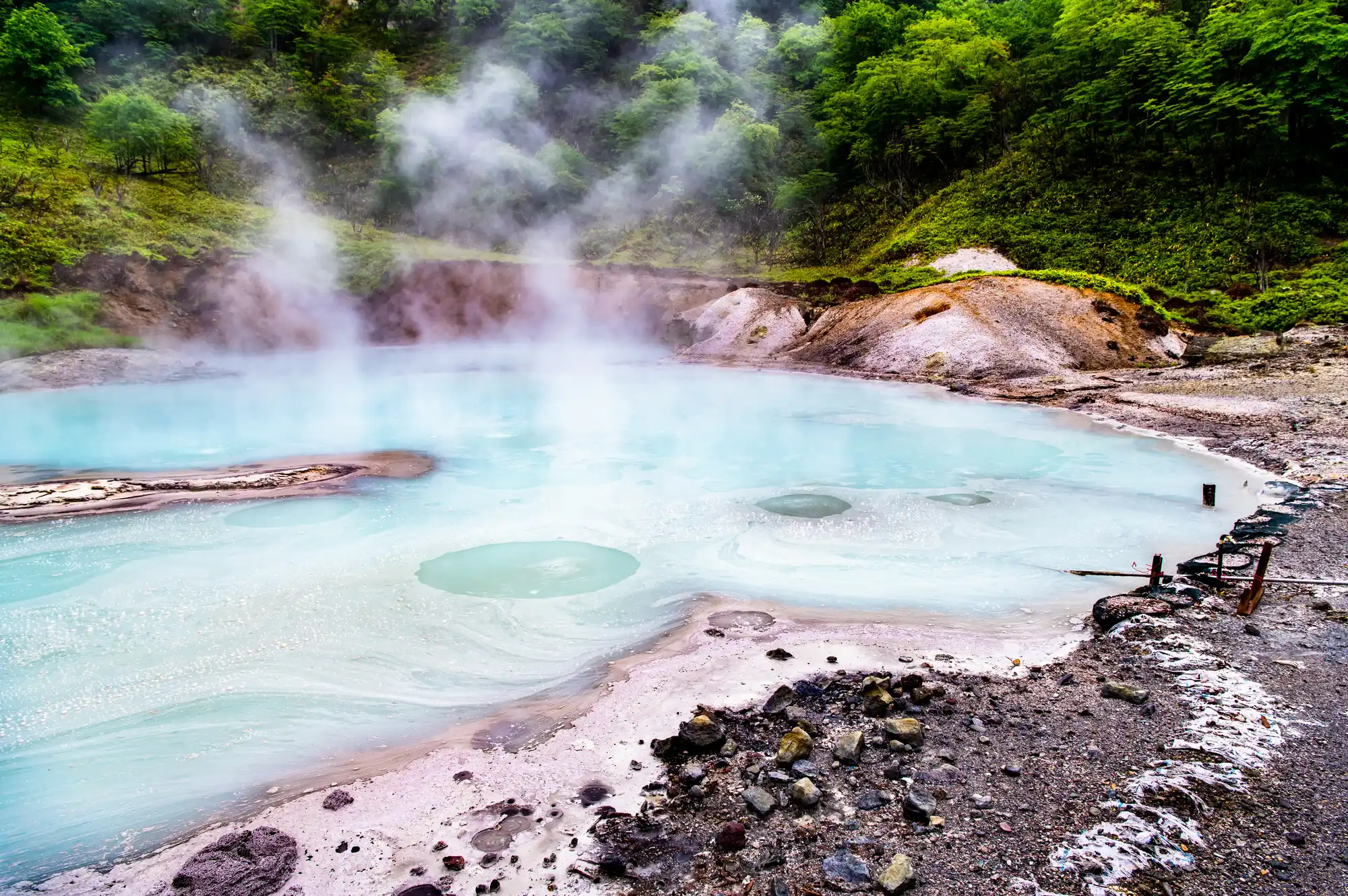
6 Surprising Features of Japanese Onsen
This article will introduce you to some unexpected features of onsen! Please share this information with your family and friends who are interested in Japanese onsens but do not know much about them!
Yunohana
Yunohana (mineral deposit) is a white or gray mass floating in the hot water that can be seen while bathing in an onsen.
Are they "Is there grime floating around? It looks dirty, like it hasn't been properly cleaned!" Some people may think so. You might think it is dirt and throw it away, but that would be a great waste!
Yunohana is the condensed and solidified components of onsen water.
Many mineral components are dissolved in groundwater heated deep underground and gush out to the surface to become onsens. The components dissolved deep underground are solidified by the decrease in temperature and pressure when they gush to the surface, and by oxidation due to contact with the air. This is the yunohana.

The shape and color of yunohana vary depending on the ingredients. They may settle not only in the hot water but also at the bottom of the bathtub or cover the surface of the hot water like a film. Depending on the onsen facility, they may also be found in waves or layers on the spout of the onsen, the edge of the bathtub, or the floor.
Although they vary depending on the spring's quality, typical benefits of yunohana include sensitivity to cold, relief from fatigue, and joint pain. Some onsen resorts dry the yunohana collected at the source and sell them as souvenirs. Yunohana, with its concentrated minerals contained in onsens, can be simply dissolved in the hot water of your bathtub to create a real onsen experience. For example, Kusatsu Onsen in Gunma Prefecture is one of the most famous onsen resorts for its yunohana. In Kusatsu Onsen, yunohana is collected from the Yubatake source and sold as natural bath salts.
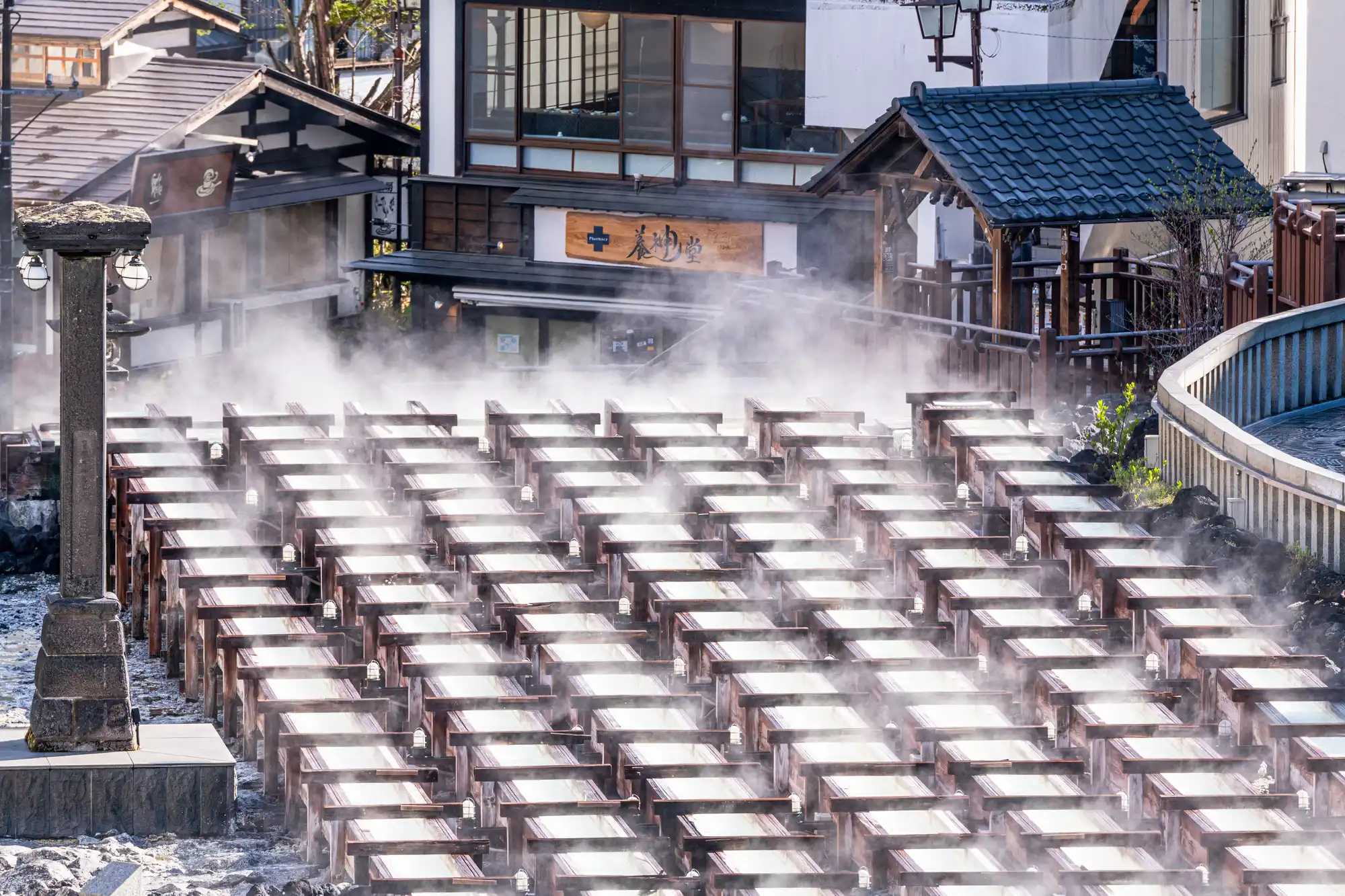
Onsens where yunohana can be seen include Noboribetsu Onsen and Goshiki Onsen in Hokkaido and Zao Onsen in Yamagata Prefecture.
Characteristic smell of Onsen
Some onsen springs emit a smell like rotten eggs.
"I can smell rotten eggs from the onsen, is this onsen safe?" Yes, it is fine.
The unique smell is a characteristic of sulfur spring water. Sulfur spring water has many beneficial effects, but there are also some things to be careful of when bathing in it.

A sulfur spring is one that contains more than 2 mg of total sulfur in 1 kg of onsen water. The characteristic odor is that of hydrogen sulfide, a compound of sulfur and hydrogen. Sulfur spring water is also known as "hot water for lifestyle-related diseases" and is expected to improve diabetes and high blood pressure. Because of its strong sterilizing power, it is also effective against skin diseases. When blood circulation is stimulated by hydrogen sulfide gas, metabolism improves and a detoxifying effect can be expected.
It is important to note that if the odor gets on your clothes, it will not come off easily. When you get out of the spa, wash off your body well in the shower and wear clothes that are resistant to the odor.
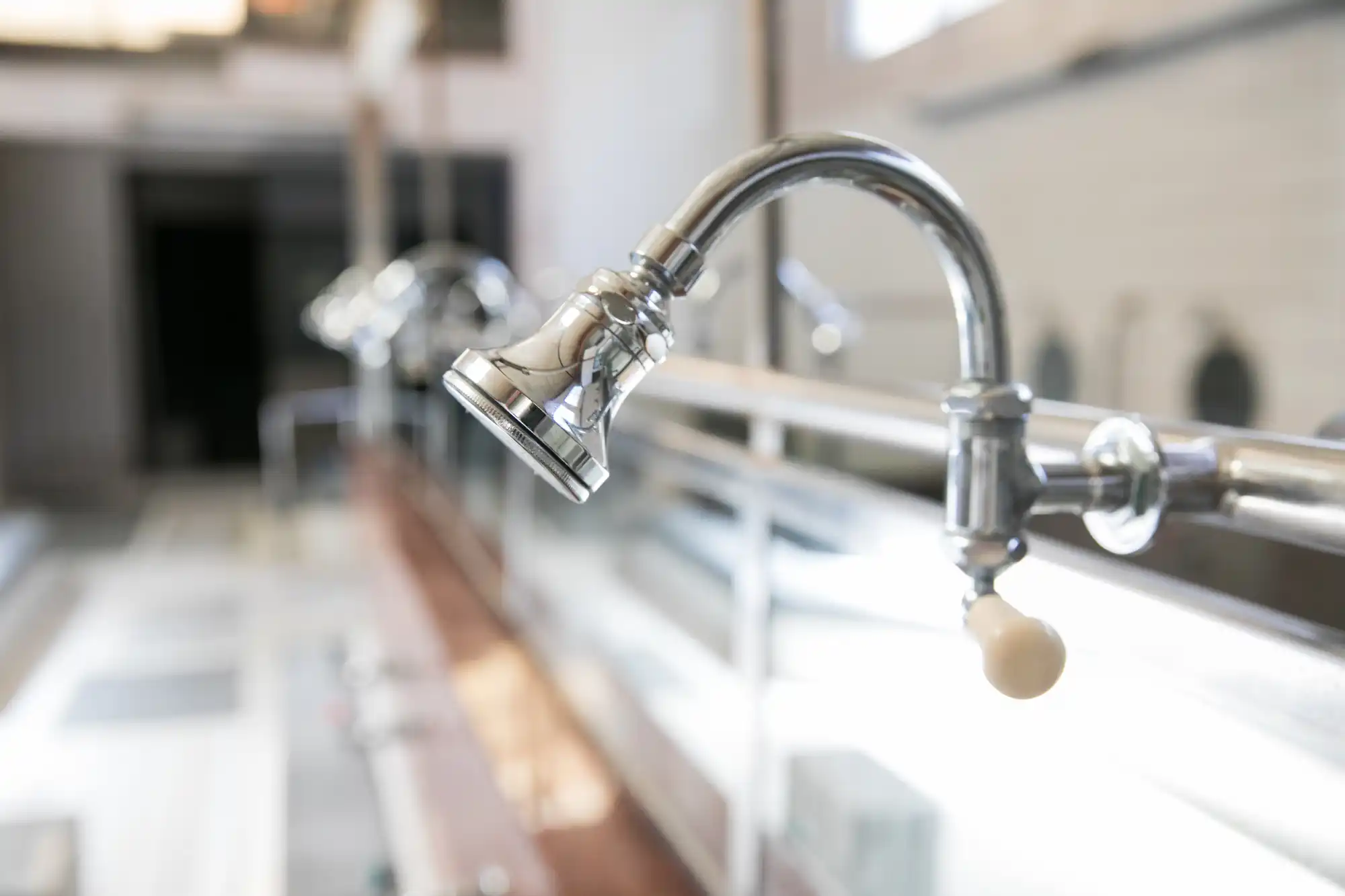
Sulfur spring water is highly effective in penetrating the skin and can cause skin irritation, so avoid prolonged bathing or if you are feeling unwell. The strong stimulation may cause skin rashes in people with sensitive skin. To prevent skin irritation, it is effective to rinse off in the shower when getting out of the bath. Hydrogen sulfide contained in sulfur springs discolors precious metals to black. When bathing, be sure to remove earrings, rings, and other precious metals.
Radioactive Onsen
Some Japanese onsens contain radioactivity.
Some people may worry, "Isn't radiation bad for my health? What if I take a bath without knowing it?"
But don't worry. Onsen containing radioactivity have medicinal properties, so much so that they are called "hot water for all illnesses!"
The radioactivity contained in onsens is a different type of radioactivity than that of dangerous nuclear power plants, and it is present in very small amounts. The properties of radioactivity are completely different. It is known that the very small amount of radioactivity contained in onsens has a positive effect on the body and stimulates it.

Radioactive springs are springs that contain radioactivity. By law, if it contains more than a certain amount of radon, it is classified as a radioactive spring. Among these, natural onsens that contain high levels of radon are called radium onsens. Since the amount of radon in a radium onsen almost disappears in the bathroom, radon onsens were developed to deliver safe radon gas to the bathtub. Radon onsens are onsens in which radon gas is delivered to the bath. In fact, many places in Japan do not make a clear distinction between radon onsens and radium onsens.
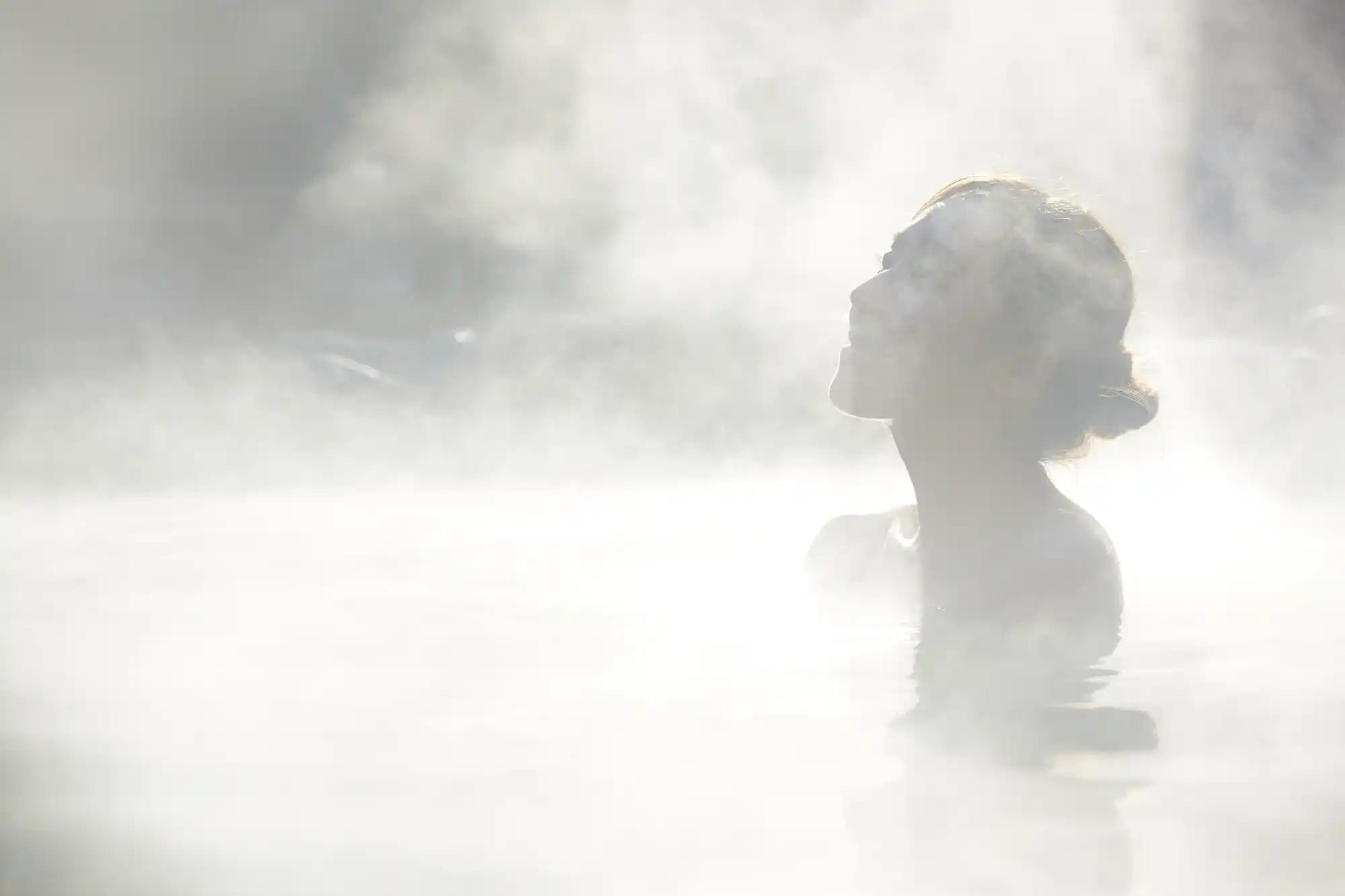
A major characteristic of radioactive springs is that, in addition to taking in radon through the skin when bathing, the benefits are also obtained by breathing in the radon-containing gases emitted from the onsen. The gases taken into the body by breathing are expelled from the body in about 3 hours.
Radioactive spring water activates tissues and cells and promotes the discharge of active oxygen. Since active oxygen causes aging and various diseases, the body becomes healthier when the discharge of active oxygen is promoted. Radioactive onsens are called "onsens for all illnesses" because they have the effect of restoring the body's natural functions and nurturing the body's ability to heal illnesses.
Drinkable Onsen
Don't you think that onsen in Japan are just for soaking in hot water? In Japan, there are onsens with a variety of beneficial effects. Onsen have been used in Japan since ancient times to treat illness and promote health. In addition to bathing in onsen, there is also the option of "drinking" onsen to enjoy its benefits.
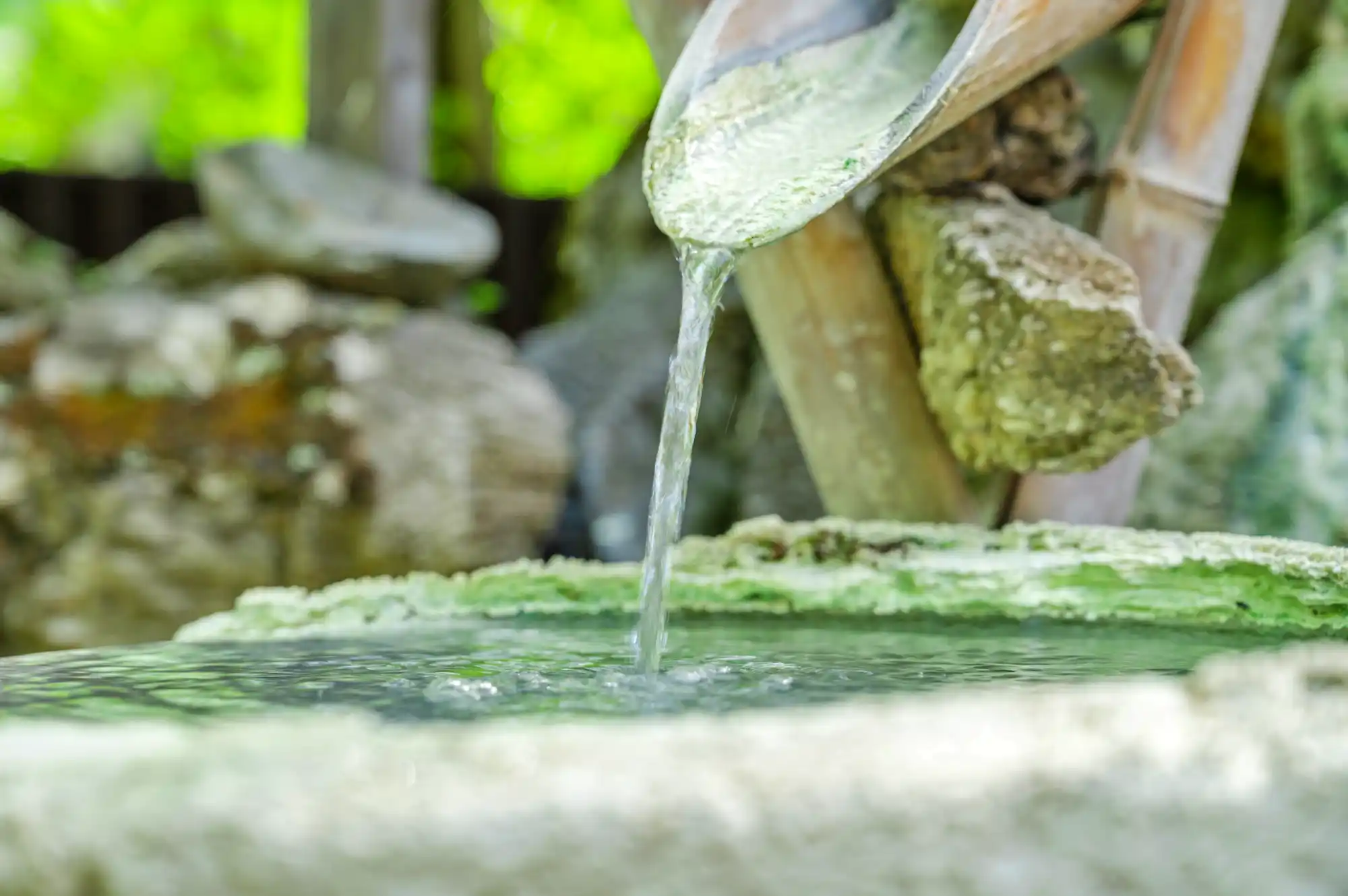
In Japan's oldest authentic history, the "Nihonshoki," there is an account of the reign of Emperor Jito (reigned 690-697), in which he cured many sick people by drinking onsen water. It is known that drinking onsen has been practiced in Japan since ancient times and was practiced from a medical standpoint at least as early as the middle of the Edo period (1650-1750).
Nowadays, only licensed onsens are permitted for drinking due to sanitary and compositional reasons. In Japan, onsens that do not have a permit for drinking are not drinkable. Onsen that have been approved for drinking can be consumed at drinking fountains or drinking facilities.
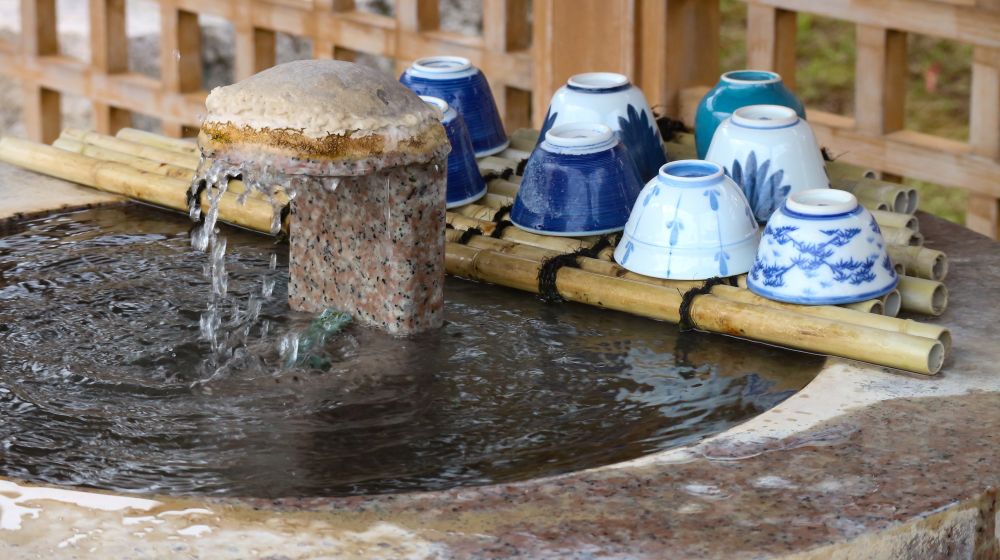
Onsens taken into the body through drinking have both partial effects on the stomach, liver, and other parts of the body, as well as effects on the whole body, as in the case of bathing. Even though they are good for the body, some onsen should not be drunk depending on the underlying disease. In drinking onsens, it is important to drink the appropriate onsen in the appropriate manner and in the appropriate amount. Check the precautions carefully before drinking.
Various Onsen temperatures
When you think of onsens, don't you think they are hot? In Japan, there are onsens that are too hot to enter, while others are colder than lukewarm water.
In Japan, the definition of an onsen is determined by law. According to the law, an onsen is defined as a spring that gushes from the source and has a temperature of 25°C or higher, or contains a specified amount or more of a specified ingredient. Onsens below 25°C are called "cold mineral springs," those between 25 and 34°C are called "low-temperature onsens," those between 34 and 42°C are called "onsens," and those above 42°C are called "high-temperature onsens."

For example, the cold mineral springs in Oita Prefecture's Kanno Jigoku Onsens are 13 to 14 degrees Celsius. Because the sulfur spring has a high sulfur content, the temperature felt by the body is low, and for the first minute or two it feels more painful than cold.
In fact, since cold onsens are often boiled, the number of facilities where one can bathe in cold onsens is limited. To enjoy cold mineral spring water of less than 25°C, summer bathing or alternating hot and cold baths are recommended. Alternating hot and cold baths means alternating between cold and warm water. Bathhouses may have both warm and cold onsens available. Alternating between warm and cold water helps regulate the autonomic nervous system and improve sensitivity to cold.
The highest source temperature in Japan is 105°C at Obama Onsen in Nagasaki Prefecture. Hot water is served at about 65°C. You may feel that you cannot bathe in high-temperature onsens because you may burn yourself just by putting your hands in them. Many Japanese people like hot water. Many onsen facilities are designed in such a way that the temperature cannot be adjusted by adding water, and adding water without permission can cause problems in public bathhouses used by locals.
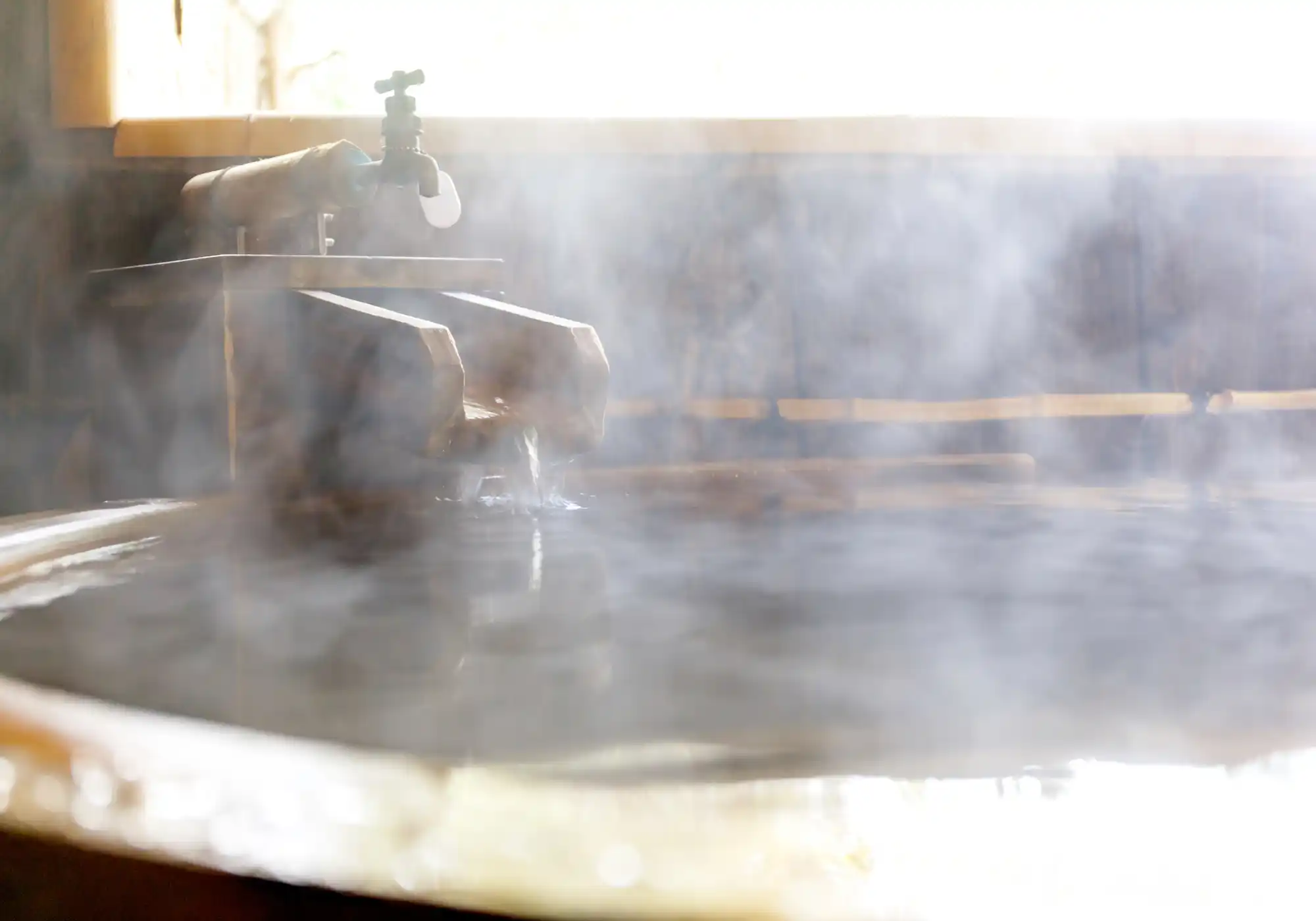
What I would like to recommend is kakeyu (pouring hot water over the body). Kakeyu is to pour hot water over the body before getting into the bathtub. Not only does it wash away dirt from your body, but it also helps your body get accustomed to the temperature and stimulation of the onsen. If you start pouring hot water away from the heart, it is less stressful on the body. In a normal onsen, about 10 splashes are sufficient. In this way, accidents during bathing, such as heart attacks and strokes, can be prevented, and it is easier to get used to the hot water.
Bathing tax
In Japan, bathing tax is collected from onsen users. When you take a bath in an onsen at a ryokan or hotel, you will see a "Bathing Tax" section on your receipt, indicating that the tax has been collected.
"In Japan, is there a tax just for taking a bath in an onsen? Why should the user have to pay?" Some may wonder this.
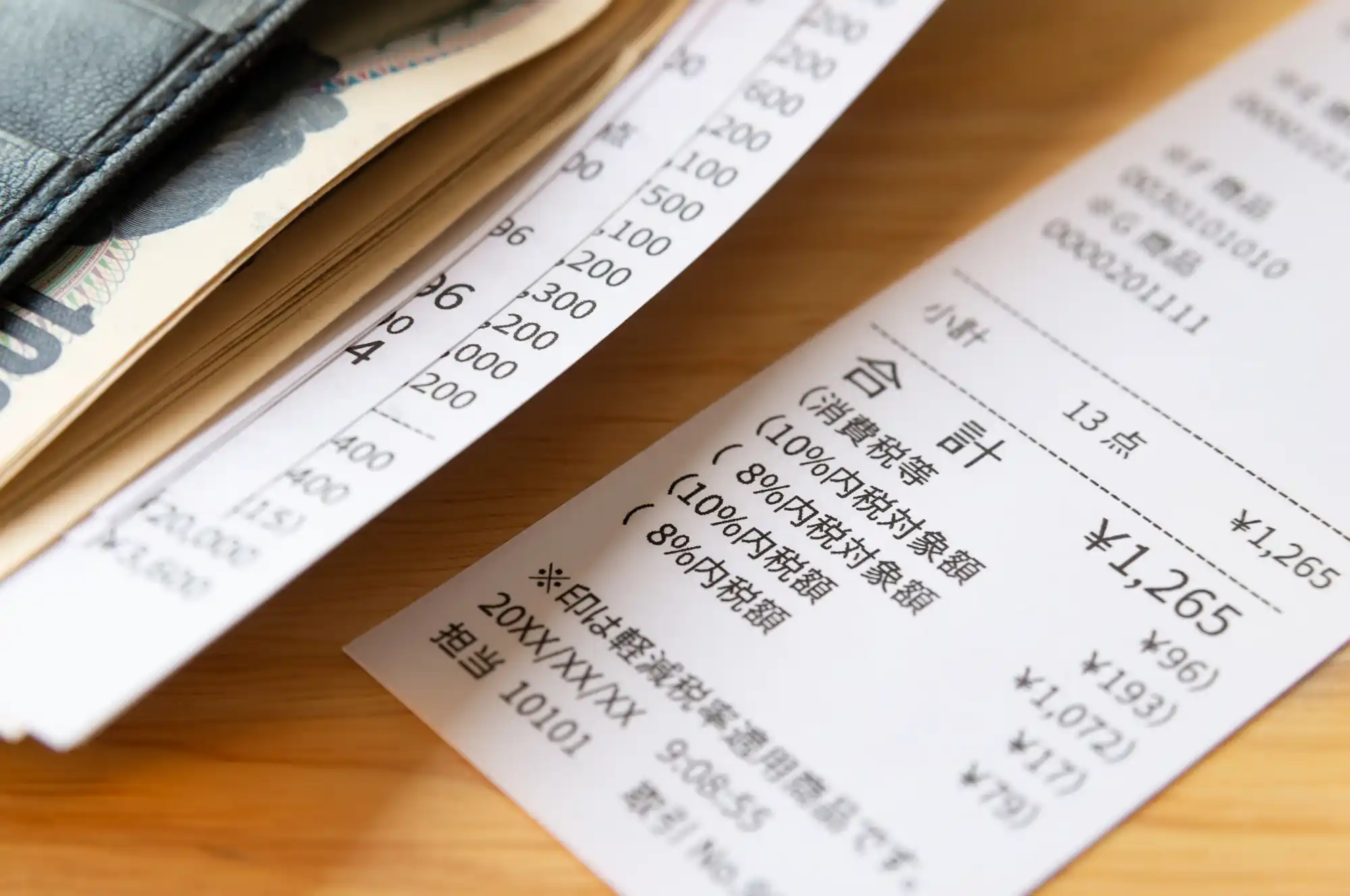
Bathing tax is a tax to be paid when using an onsen. It is not the onsen facility that bears the tax, but the onsen user. The tax is paid to the municipality by the facility operator on behalf of the onsen patrons.
The bathing tax is a very important tax for preserving Japan's onsen culture. The tax is used to pay for the maintenance of onsen facilities, cleaning and maintenance of surrounding parks and open spaces, and to promote tourism. The tax is not only a valuable source of revenue for municipalities with onsen facilities, but is also used to help tourists further enjoy onsens and tourism.
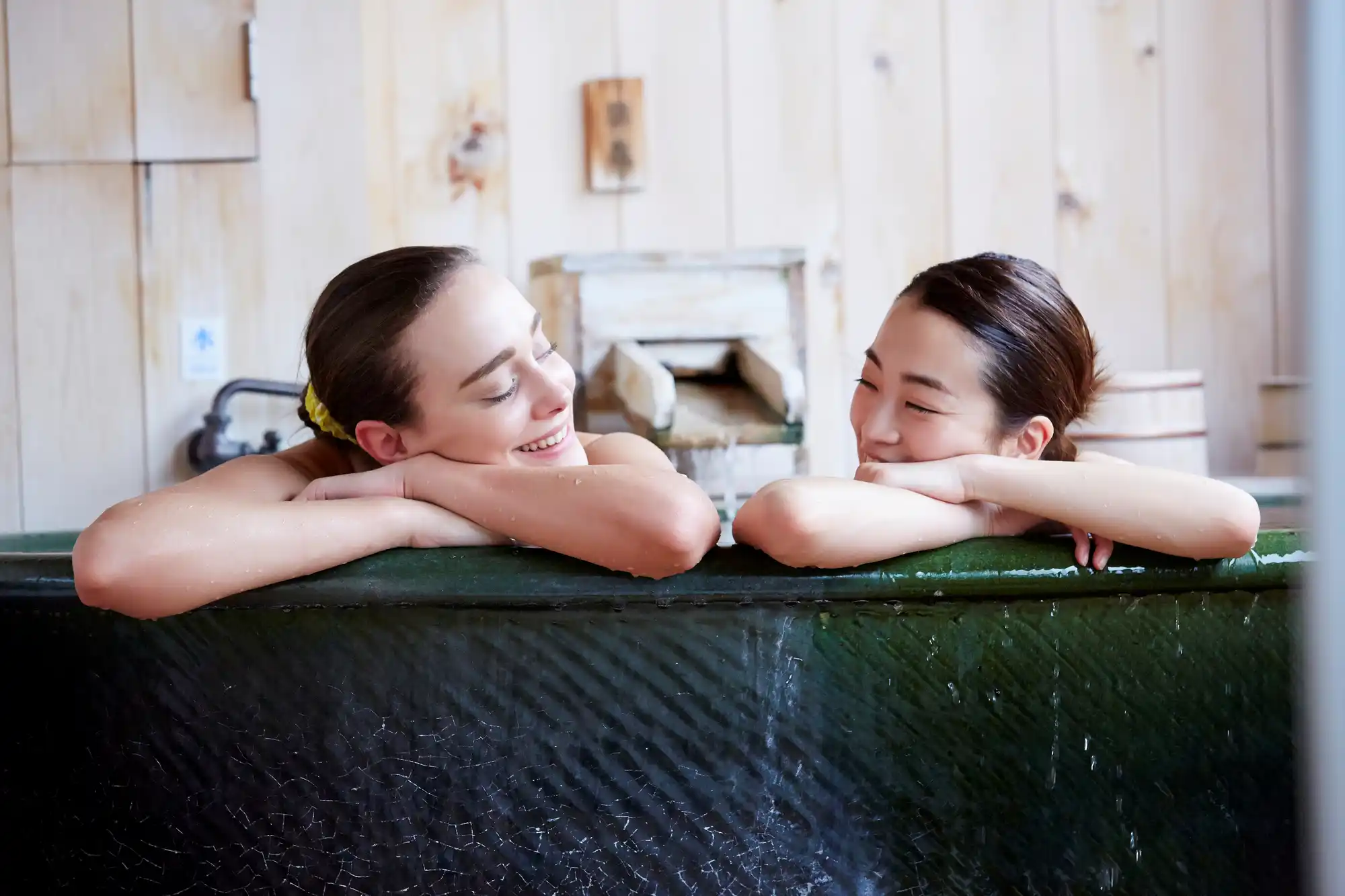
The bath tax was established by law in 1950 as an indirect tax, and enacted as an objective tax in 1957. In principle, the tax amount is 150 yen per person per day; when the tax was enacted in 1950, it was 10 yen, but it was raised in stages to 150 yen. The standard tax rate is 150 yen, but since the tax is a local tax, each municipality is free to determine the actual tax amount. Therefore, the tax rate may differ from region to region.
Bathing tax may be exempt from taxation. That is, bathing for persons under 12 years of age, continuous bathing for the purpose of recuperating from illness, and bathing for students or escorts on trips or events for educational purposes, excluding universities. It is also the case when the bathhouse is affiliated with company housing or employee dormitories and is used in daily life. This also applies to foreign tourists. As with the bath tax rate, each municipality has its own individual regulations regarding tax exemptions.
If you are concerned about this, it is a good idea to understand the bathing tax rules of the area you are visiting in advance, for example, on the official website of the municipality.
Search by Prefecture
Search by Onsen area
- Hokkaido
- Nagano
- Akita
- Kanagawa
- Yamagata
- Shizuoka
- Gifu
- Hyogo
- Wakayama
- Yamanashi
- Kumamoto
- Oita
- Fukushima
- Tochigi
- Gunma
- Ishikawa
- Shimane
- Ehime
- Saga
- Kagoshima
